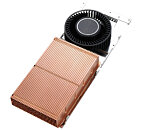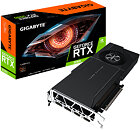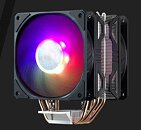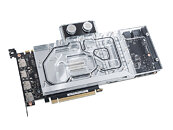
ASUS Intros GeForce RTX 4070 Turbo Graphics Card with Lateral Flow Cooler
ASUS introduced the GeForce RTX 4070 Turbo, a performance segment graphics card with a lateral blower-type cooling solution that should make it ideal for restrictive airflow environments (such as a stack of them in an AI processing box). The card is strictly 2 slots thick, no taller than what constitutes full-height for addon cards (11.1 cm), and is 26.9 cm long. It lacks a backplate, so it could give a little more breathing room to its neighboring card. Its sole power connector, an 8-pin PCIe, is located at the tail end of the card, instead of the top, for additional clearance.
Internally, the ASUS Turbo RTX 4070 cooling solution features a copper base-plate, which conveys heat to an aluminium channel stack that's ventilated by a lateral blower. ASUS has given this blower a high endurance dual ball-bearing. The RTX 4070 GPU at the heart of the card runs at NVIDIA reference specs, with a 2475 MHz boost frequency, and a 21 Gbps GDDR6X memory speed. It features 12 GB of it across a 192-bit memory bus. There are two SMD switches on the card, the "Turbo" switch overrides software fan control and holds the fan on a steep fan-curve, hitting 100% even; while the VM_SW switch toggles between a "Quiet" and "Performance" mode, we don't know if this uses a dual-BIOS mechanism, or is a physical toggle for ASUS GPU Tweak software. ASUS didn't release pricing information.
Internally, the ASUS Turbo RTX 4070 cooling solution features a copper base-plate, which conveys heat to an aluminium channel stack that's ventilated by a lateral blower. ASUS has given this blower a high endurance dual ball-bearing. The RTX 4070 GPU at the heart of the card runs at NVIDIA reference specs, with a 2475 MHz boost frequency, and a 21 Gbps GDDR6X memory speed. It features 12 GB of it across a 192-bit memory bus. There are two SMD switches on the card, the "Turbo" switch overrides software fan control and holds the fan on a steep fan-curve, hitting 100% even; while the VM_SW switch toggles between a "Quiet" and "Performance" mode, we don't know if this uses a dual-BIOS mechanism, or is a physical toggle for ASUS GPU Tweak software. ASUS didn't release pricing information.









































































